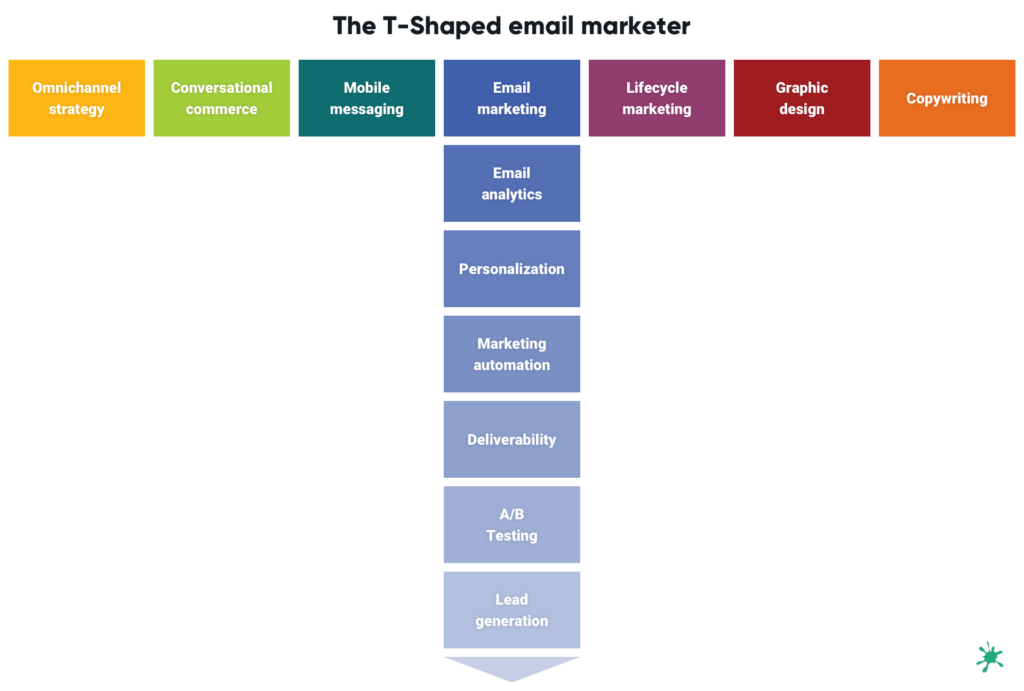Email Marketing
DIY Email Marketing: 6 Tips for One-Person Teams

Email Marketing

Are you flying solo when it comes to running the email show? Come on now… DIY email marketing can’t be that hard, right?
Sending email seems simple. All day long, we fire off personal and work emails. But as any email marketer knows, there’s about a thousand items on your checklist, from timing campaigns correctly to copywriting to setting up tracking and landing pages. There is a lot to do.
The job gets even more complicated when you consider technical limitations, accessibility, brand guidelines, and those pesky email client rendering inconsistencies.
A typical email marketing team is two to five people, according to our research. That could include people with copywriting experience, graphic design skills, an email developer, and a lifecycle marketing strategist. So what do you do if you are the one filling all those roles?
First, know that – if you are alone – you’re not alone. Out of the more than 3,200 people who completed the Inbox Insights 2023 survey, around one third are one-person email teams, freelancers, or solopreneurs. If you’re doing it all, here are some ways to make DIY email marketing a little easier:
One advantage of being a one-person email team is that you can move quickly. Inbox Insights found smaller teams and smaller businesses were the most likely to say they can launch a new campaign within one week. Let’s be honest, sometimes corporate red tape and colleagues who procrastinate can really slow you down.
You maybe doing it all yourself, but you don’t have to fly by the seat of your pants and create every campaign from scratch. The best way to manage the chaos of DIY email marketing is to create workflows, checklists, and standard operating procedures. That sounds boring, but it will keep you organized and on track while helping you avoid costly email marketing mistakes.
An email design system brings consistency to your processes, saves time, and helps you scale up your efforts. When you have reusable components and modules you can plug in to different campaigns, you will enjoy both speed and creative flexibility in your email efforts.
While design systems are more common in larger organizations with bigger email teams, they can also bring a little sanity and stability to the table. To see how far you can take things, check out this presentation on the ultimate email design system.
While you may do all the work, there will definitely be people who come to you with email marketing ideas, requests, and urgent needs. But those who don’t work with email aren’t always aware of all the decisions that need to be made before launching a campaign. You’ll probably find yourself going back and forth on questions like these:
Email marketing briefs ensure you get all the details you need when your manager or a colleague makes a request. The brief is basically a form you can have others fill out to make sure expectations are clear from the start.
We’ve put together an email campaign brief you can download and try out, or customize your own based on your defined processes.
Get Your Email Marketing Brief
When we asked email teams of one what they struggled with the most, those marketers told us standing out in the inbox is the biggest thing holding them back from success. While larger teams worry more about privacy and security, solo email marketers just want to do something that helps them get noticed.

The best way to stand out? Email design. In fact, the Inbox Insights survey found that senders identified design and copy as the biggest contributor to success. You can always improve your DIY email marketing skills by learning more about graphic design and copywriting. But you can also take advantage of tools and templates that elevate your email game.
If you’ve been given full responsibility for the email channel, there’s a good chance you are a T-shaped email marketer. That means you’ve got deep expertise in certain areas and basic knowledge in others. You can use all your skills to bring value to the email channel, and there are always marketing tools that can provide a hand in areas where you lack experience.

If writing code for emails isn’t your strong suit, there’s no shame in using a drag-and-drop email editor to build campaigns. Find an intuitive tool like the Email Editor from Sinch Mailjet and you’ll be creating stunning, responsive emails in mere minutes.
Great design doesn’t necessarily have to be brand new or innovative to stand out. For inspiration, take a look at sites like ReallyGoodEmails and Email Love to see what’s out there. You can also subscribe to emails from brands that impress you and create a swipe file of email design ideas. (Make a new email address just for this—trust us.)
Email templates can also be a huge help and get the job done a little faster. Take a look through our list of free email templates for some inspiration (or swipe them for yourself).
If you’re the only one working on email – you’ve got no copilot. However, you could be putting some of your job on autopilot. In this fast-paced world of ours, email marketing automation is not a shortcut – it’s a necessity.
Email service providers (ESPs) vary in the kind of automation they offer. But at a minimum, most allow you to schedule emails ahead of time. For newsletters and other regular campaigns that use an email template, spend a few days batch building and testing your emails and schedule them for later.
Similarly, if your ESP allows you to trigger emails based on subscriber behavior, taking the time to set up automations can go a long way to future success. Some common automated email campaigns include:
Nurture series and drip campaigns can also automatically deliver specific content to people over a set time period. The more you can build and test your emails ahead of time, the easier it will be to get your funnel going.
Sometimes in marketing, we like to think that bigger is better and more is more. Because email is a conversational, 1:1 channel, though, it’s much better to choose a regular cadence for your email sends. It keeps things manageable for you, and it
You want engaged subscribers who eagerly anticipate your emails. The way to do that is through consistency and quality.
If you get a little bump in traffic or sales every time you send an email, that’s great. But eventually, you’ll hit a tipping point and start annoying people, especially if you’re blasting out irrelevant messages to your entire list. Then suddenly, you’re losing subscribers and stats start moving in the wrong direction.
Set expectations for your subscribers and follow through. If that means sending a newsletter every Tuesday, do it. If that means every other Tuesday, because you’re just one person and it’s a lot to get an email out the door, then do that instead.
Sending high quality emails that resonate with your audience less frequently wins over a barrage of poorly thought through campaigns just because someone told you you “should” send emails every day. Pick a cadence that works for you and stick with it.
One of the toughest things about DIY email marketing is that it there’s a lot of pressure to be perfect without much backup. Expectations for email performance are high, and when a campaign flops because of a mistake you made… Well, it’s hard not to take things personally.
Email quality assurance (QA) should be the last step in your production workflow before you hit send. That means catching typos, considering email accessibility, checking links, monitoring for deliverability issues, and previewing how the campaign renders on different clients and devices.
If you’re riding solo, Sinch Email on Acid has your back. Our platform is a solo email marketer’s best friend. As a matter of fact, it’s almost like having someone join your one-person email team.
With our email pre-send testing platform you can:
You’ve spent a lot of time and effort on everything from strategy to design. Let Sinch Email on Acid help you polish that campaign to perfection. Give us a try and find out why so many senders trust us to help them put their best email forward.